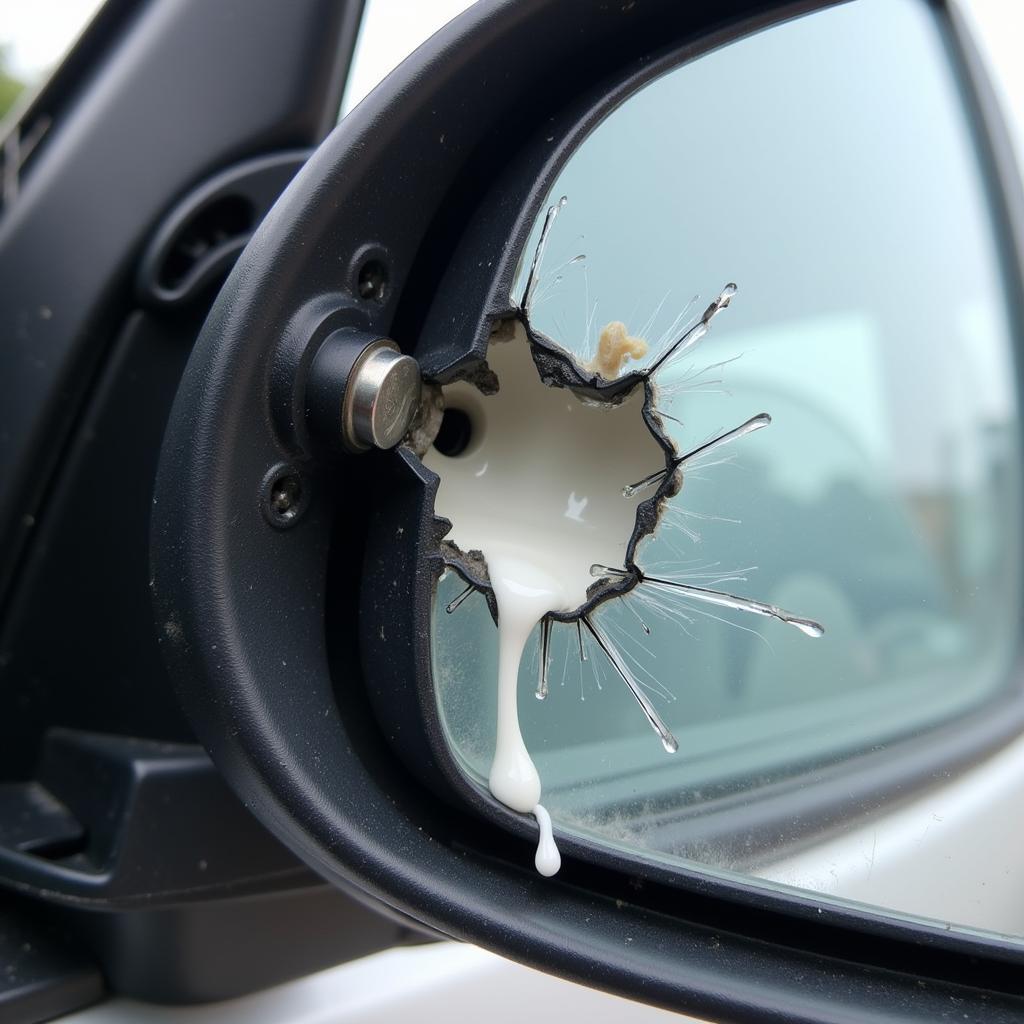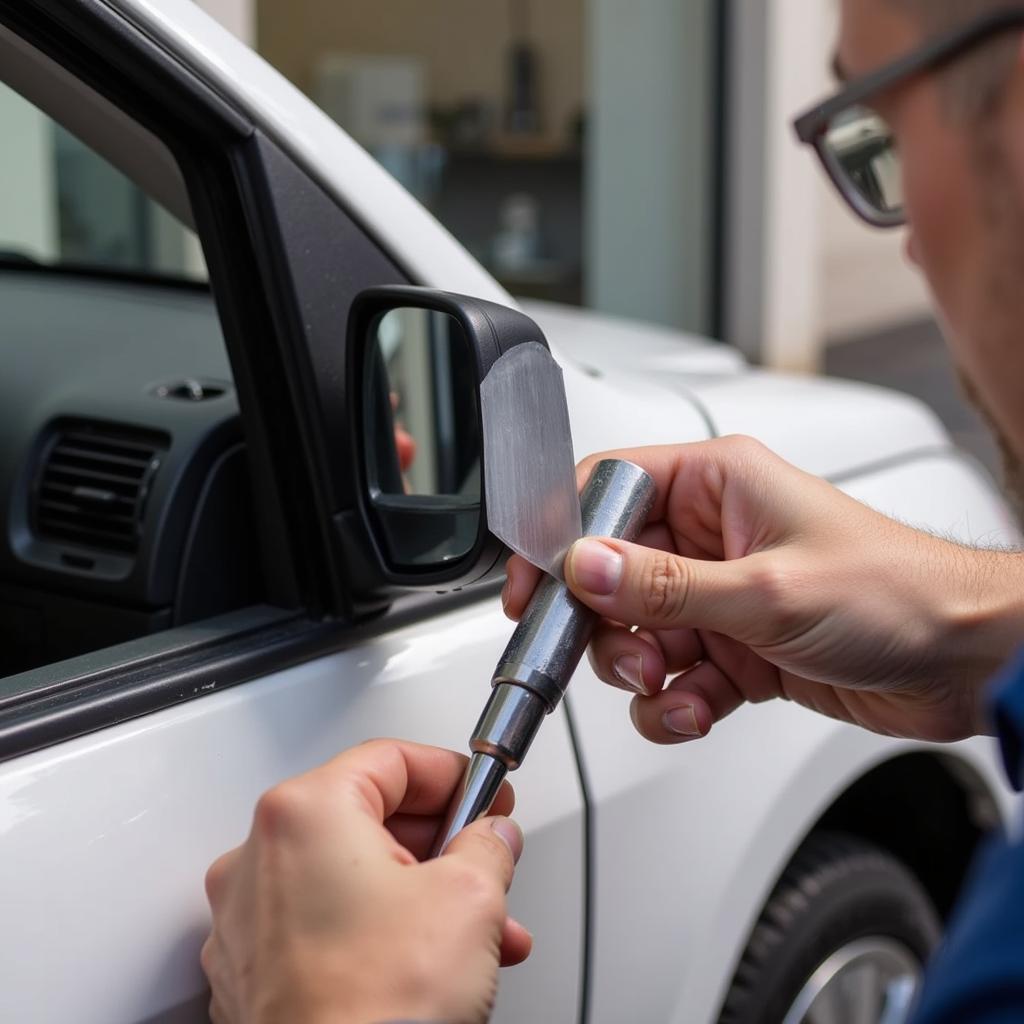Using gorilla glue to fix a car mirror might seem like a quick and easy solution, but it’s often a recipe for disaster. While its incredible strength is undeniable, this very characteristic makes it unsuitable for most car mirror repairs. There are far better and more effective methods to reattach or repair your car mirror, ensuring a secure, lasting fix and preventing further damage.
Understanding the Challenges of Using Gorilla Glue for Car Mirror Repair
Gorilla glue expands as it cures, creating a strong bond. However, this expansion can put stress on the delicate plastic components of a car mirror housing, leading to cracks and further damage. Moreover, the rigid bond created by gorilla glue doesn’t allow for any flexibility. The vibrations and impacts experienced during driving can cause the mirror to break again, potentially at a weaker point than the original damage.
Why Gorilla Glue and Car Mirrors Don’t Mix
The differing materials involved also present a problem. Gorilla glue adheres best to porous surfaces. Car mirror housings are often made of smooth plastics, which can hinder proper adhesion. Additionally, the strong bond of gorilla glue makes it extremely difficult to remove if you need to make further repairs or adjustments. In most cases, attempting to remove gorilla glue will result in more damage to the mirror housing.
 Gorilla Glue Damaged Car Mirror
Gorilla Glue Damaged Car Mirror
Effective Alternatives to Gorilla Glue for Car Mirror Repair
Fortunately, there are several effective alternatives to gorilla glue that are specifically designed for automotive repairs. These adhesives are formulated to bond to various materials, including plastics commonly used in car mirrors, and provide a more flexible bond that can withstand the stresses of driving.
Choosing the Right Adhesive
- Epoxy: Two-part epoxy adhesives offer excellent strength and adhesion to various materials. They provide a strong, durable bond that is resistant to vibrations and impacts.
- Plastic Bonding Adhesives: Specifically designed for bonding plastics, these adhesives create a flexible bond that can withstand the expansion and contraction caused by temperature changes.
- Automotive Mirror Adhesive: These specialized adhesives are formulated for car mirror repairs, ensuring a strong and lasting bond. They are often designed to cure quickly and be resistant to weather and UV damage.
Repairing Your Car Mirror: A Step-by-Step Guide
- Clean the surfaces: Thoroughly clean both the mirror and the housing with isopropyl alcohol to remove any dirt, grease, or residue.
- Prepare the surfaces (if necessary): Some adhesives may require sanding or priming the surfaces for optimal adhesion. Refer to the adhesive instructions for specific guidance.
- Apply the adhesive: Carefully apply the adhesive to the appropriate surfaces, following the manufacturer’s instructions.
- Secure the mirror: Hold the mirror firmly in place for the recommended curing time. Use tape or clamps if necessary.
- Allow to cure completely: Do not disturb the mirror until the adhesive has fully cured, typically for 24 hours.
“Using the correct adhesive and following the proper procedure is crucial for a successful car mirror repair,” advises John Miller, a seasoned automotive technician with over 20 years of experience. “Don’t be tempted by quick fixes that could cause more harm than good.”
 Applying Adhesive to Car Mirror
Applying Adhesive to Car Mirror
Preventing Future Car Mirror Damage
- Park carefully: Avoid parking in tight spaces or areas where your mirrors are likely to be bumped.
- Be mindful of low-hanging branches: Be aware of your surroundings when driving, especially when passing under low-hanging branches.
- Regularly check your mirrors: Inspect your mirrors for any signs of looseness or damage and address them promptly.
“Prevention is always better than cure,” emphasizes Sarah Chen, an automotive engineer specializing in vehicle safety. “Taking simple precautions can significantly reduce the risk of damaging your car mirrors.”
Conclusion
While gorilla glue might seem like a convenient solution, it’s not the right choice for fixing car mirrors. Its strength and rigidity can lead to further damage. Opting for appropriate automotive adhesives and following the correct repair procedures ensures a durable and lasting fix. If you’re unsure about the best approach, consulting a professional automotive technician is always a good idea. For personalized advice and assistance, connect with AutoTipPro at +1 (641) 206-8880 or visit our office at 500 N St Mary’s St, San Antonio, TX 78205, United States.






Leave a Reply